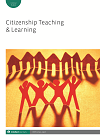
Full text loading...
 , Najwan Saada2
, Najwan Saada2 , Aryeh Ben-Haim1
, Aryeh Ben-Haim1
What is the right way to design interethnic educational encounters to promote a shared society in Israel? The challenge of bridging groups who speak different languages is magnified in the Israeli case because of the national conflict and linguistic asymmetry. This article examines a possible solution, a partly bilingual massive open online course (MOOC), developed by the authors and designed to maintain a balanced emphasis on students’ ethnic group identities, along with openness towards the Other. In this qualitative research, we explored the participants’ experiences of the MOOC and whether it promoted cross-cultural understanding.

Article metrics loading...

Full text loading...
References


Data & Media loading...

Publication Date:
https://doi.org/10.1386/ctl_00126_1 Published content will be available immediately after check-out or when it is released in case of a pre-order. Please make sure to be logged in to see all available purchase options.